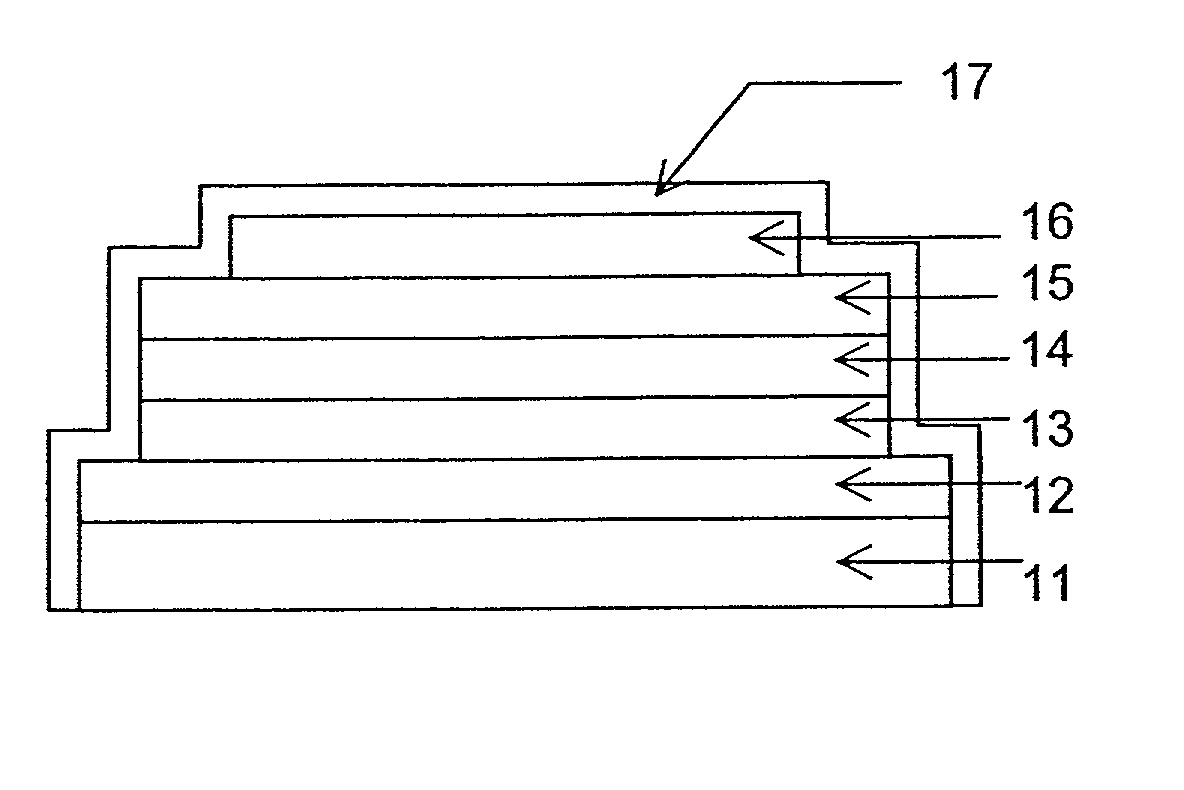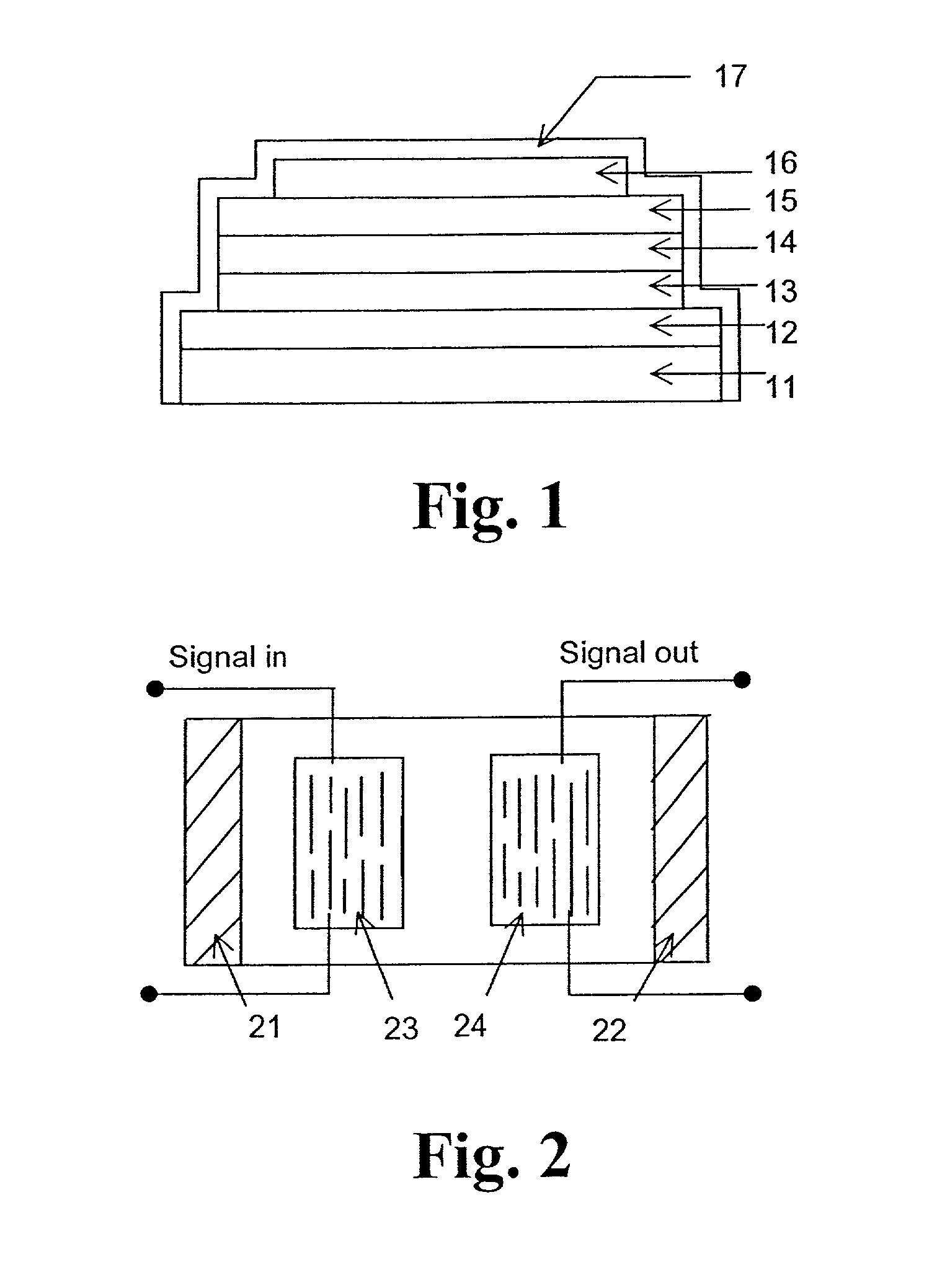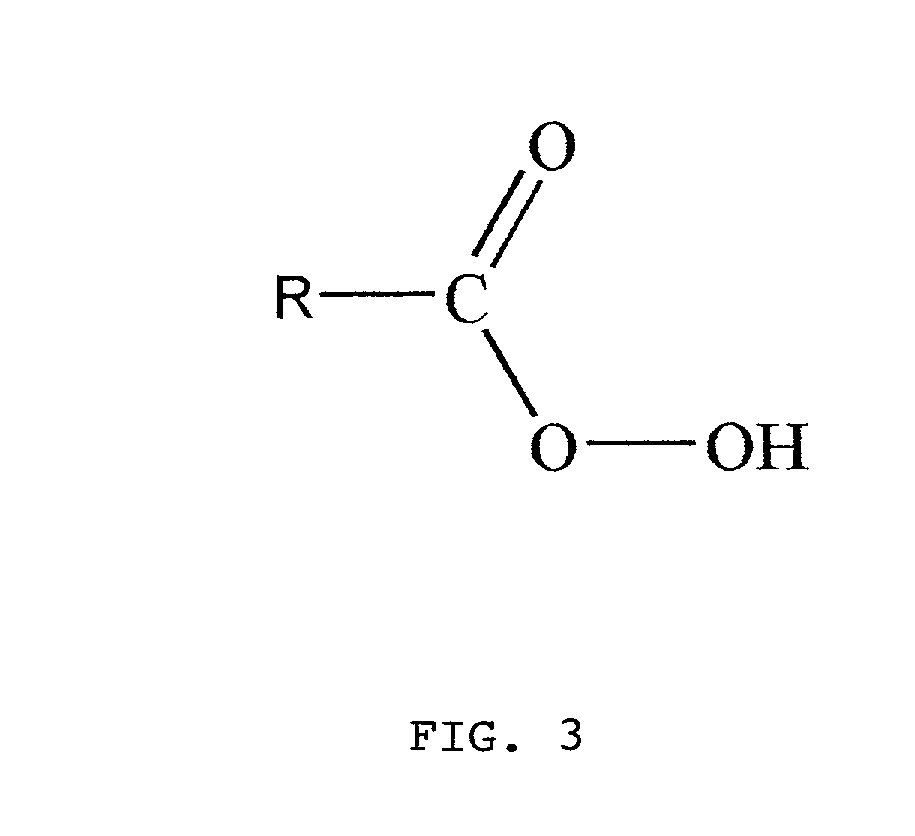Process for producing aluminum oxide films at low temperatures
a technology of aluminum oxide film and low temperature, applied in the field of microelectronics, can solve the problems of pinhole formation, uneven resulting film, process limits,
- Summary
- Abstract
- Description
- Claims
- Application Information
AI Technical Summary
Problems solved by technology
Method used
Image
Examples
case b
[0057] A comparison between Case A and Case B shows that replacing water with ozone was beneficial for the deposition process at low temperature.
example 2
Depositing Al.sub.2O.sub.3 Thin Films on an Organic Layer Using Ozone as an Oxygen Source
[0058] A substrate with an organic thin film was provided into the reaction space of an F-450 ALD reactor manufactured by ASM Microchemistry Oy, Finland. The pressure of the reaction space was adjusted to about 5-10 mbar with a mechanical vacuum pump and flowing nitrogen gas that had a claimed purity of 99.9999%. Then the temperature of the reaction space was adjusted to about 110.degree. C. TMA evaporated from an external source and ozone prepared on the premises were alternately introduced into the reaction space and contacted with the surface. The pulsing times were 1 s for TMA and 4 s for O.sub.3. The source chemical pulses were separated from each other with nitrogen gas. The purging time lasted for 1.0-1.5 s after each source chemical pulse. The pulsing cycle consisting of these two source chemical pulses and two purging periods was repeated until a 50 nm aluminum oxide thin film was produ...
PUM
| Property | Measurement | Unit |
|---|---|---|
| Thickness | aaaaa | aaaaa |
| Thickness | aaaaa | aaaaa |
| Thickness | aaaaa | aaaaa |
Abstract
Description
Claims
Application Information
 Login to View More
Login to View More - R&D
- Intellectual Property
- Life Sciences
- Materials
- Tech Scout
- Unparalleled Data Quality
- Higher Quality Content
- 60% Fewer Hallucinations
Browse by: Latest US Patents, China's latest patents, Technical Efficacy Thesaurus, Application Domain, Technology Topic, Popular Technical Reports.
© 2025 PatSnap. All rights reserved.Legal|Privacy policy|Modern Slavery Act Transparency Statement|Sitemap|About US| Contact US: help@patsnap.com



